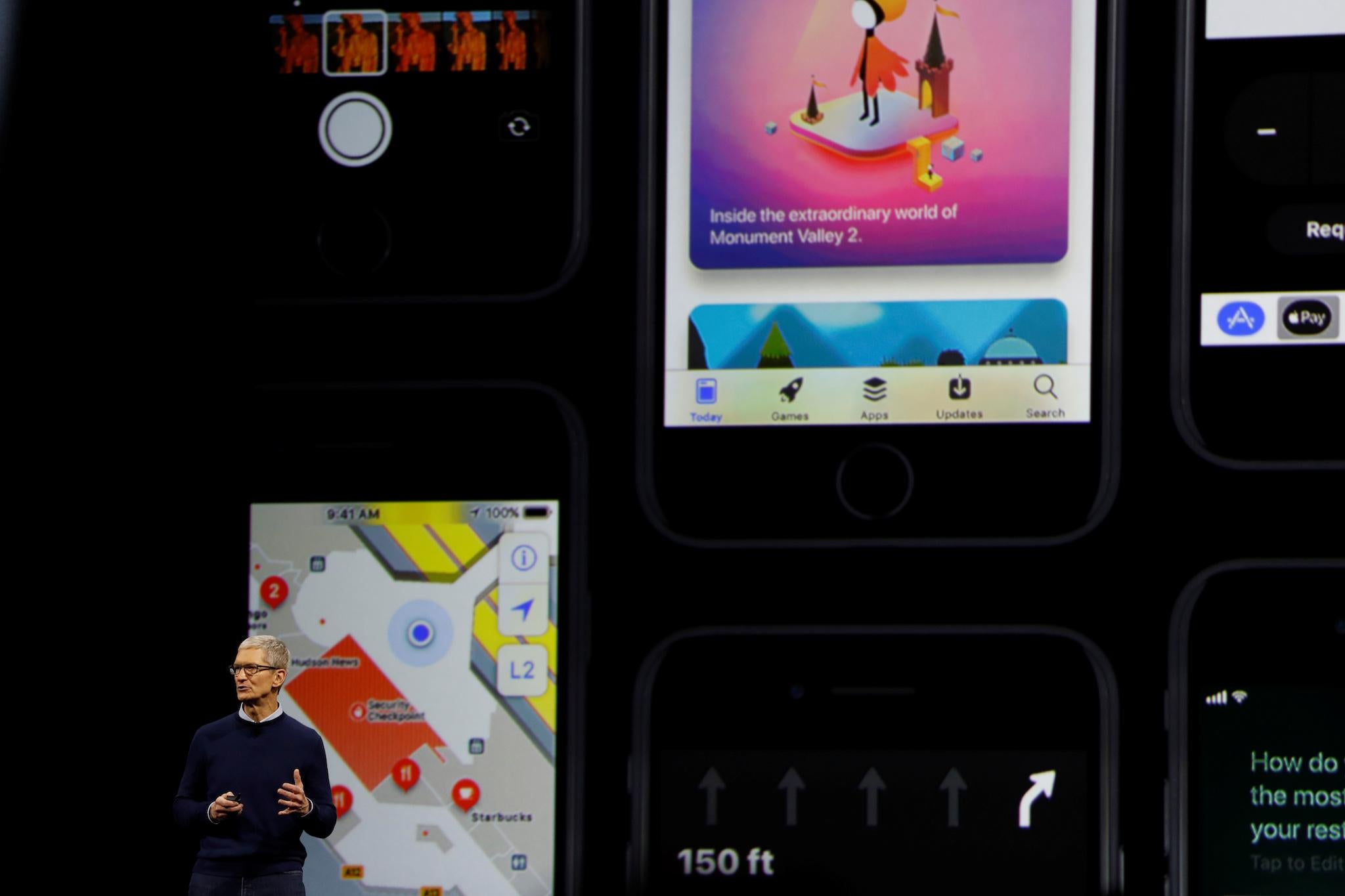iOS 12 features: What the latest iPhone could really look like, as Apple prepares for WWDC 2018
The biggest feature might not actually be a feature at all

Your support helps us to tell the story
From reproductive rights to climate change to Big Tech, The Independent is on the ground when the story is developing. Whether it's investigating the financials of Elon Musk's pro-Trump PAC or producing our latest documentary, 'The A Word', which shines a light on the American women fighting for reproductive rights, we know how important it is to parse out the facts from the messaging.
At such a critical moment in US history, we need reporters on the ground. Your donation allows us to keep sending journalists to speak to both sides of the story.
The Independent is trusted by Americans across the entire political spectrum. And unlike many other quality news outlets, we choose not to lock Americans out of our reporting and analysis with paywalls. We believe quality journalism should be available to everyone, paid for by those who can afford it.
Your support makes all the difference.Apple is about to reveal the future of the iPhone.
The company is holding its annual WWDC conference, during which it shows off new software for the iPhone, Mac, iPad, Watch and just about every other product it makes.
Despite that, some information has managed to escape. Here's what Apple might be about to announce.
Digital Health
Apple's biggest feature this year might be aimed at making you use your phone less, not more. The company is rumoured to be working on a new feature that might called Digital Health, and is aimed at making your relationship with your handset a little more mindful and less addictive.
What form that will take isn't clear. But it's likely that it will monitor how long people are using certain apps, and tell them they might want to take a break if that time seems excessive.
Google launched its own version of the same tools at its I/O developer conference earlier this year. Those do exactly that, as well as adding a special feature that makes the phone less and less appealing as bedtime comes around.
Improved AR
Apple has been incredibly interested in augmented reality lately – much of last year's WWDC keynote was focused on the technology and its applications. And it looks like there might be a similar interest this time around, too.
The company is rumoured to be working on a second version of ARKit, the base technology that Apple gives to developers so they can build augmented reality software more easily.
The new technology is rumoured to allow each phone's AR software to interact with each other, allowing two phones to see one virtual object in the real world, for instance.
The possible uses for such technology are huge – developers have already harnessed AR to put fighting robots into the real world, for instance, but with more complex implementations of it those robots might be able to fight each other. Apple has also shown off AR-based shopping, such as an Ikea app that superimposes virtual furniture into your real house, and it is possible to imagine a whole family looking at that through their own individual handsets.
NFC
Apple's newer phones have a mostly ignored but very important chip inside of them, which enables NFC, or near-field communication. At the moment, it's the technology powering Apple Pay, though neither the company or the phone make a big deal about how that actually works.
Some rumours have suggested that the NFC chip could be opened up to allow it to be used by developers for a whole range of functions. The chip is incredibly secure, so could be used for things similar to payments: unlocking doors by holding the phone up to a lock, for instance.
It is the kind of feature that is unlikely to be interesting right away to normal users of the iPhone. But as new technology like the smart home arrives, it could become very useful indeed.
New animoji
Animoji were the breakout hit of the iPhone X launch. And Apple has worked hard to keep that momentum, releasing ads showcasing the face-tracking technology and new animals that users can pretend to be.
So it's a safe bet that iOS 12 will bring a new set of animoji, too. (The iPad and more iPhones will be getting the Face ID technology that powers it, too, so releasing more faces in September will be good timing.)
It's not clear what those will be, or how many new faces there will be. So far, they've all been based on emoji.
Performance upgrades
Probably the most important part of iOS 12, though, isn't going to be a new feature at all. It's going to be improving the speed, efficiency and reliability of the features that are already there.
This might be one of the reasons that we've heard so little about what's going to be announced at WWDC. And it might lead to a muted reaction after the keynote, if Apple really does leave fans without the headline-grabbing and iPhone-altering features they expect.
This focus is likely to help both Apple and its users in the long run, though. A number of features have been delayed in recent months – both AirPlay 2 and iMessages in the Cloud were first announced at WWDC last year, and only arrived this week – and some others have run into problems with their implementation.
Join our commenting forum
Join thought-provoking conversations, follow other Independent readers and see their replies
Comments